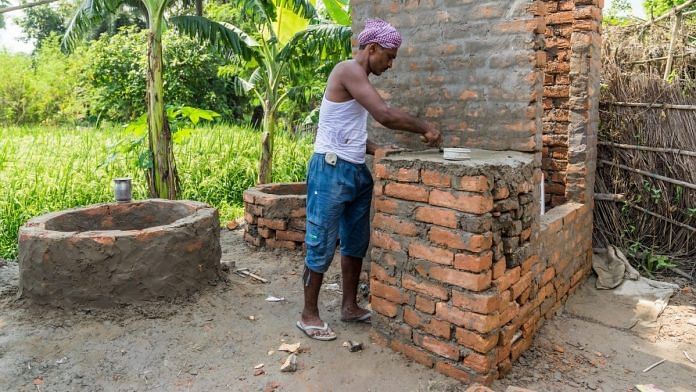The government pins its rebuttal on a NARSS study, which it backs, while questions on methodology and scale remain
The “theme” of my article, In mad race for targets, Modi’s Swachh Bharat could fumble the same way UPA plans did, has been underscored very eruditely by Yugal Joshi in his response. The Swachh Bharat Mission (SBM) does indeed in effect, have very little difference from other sanitation policies on the ground.
This is especially so in the area of behaviour change communication strategies. The continued focus on shame and gendering of toilets is contrarian to the spirit of a jan andolan – with the exception of the Shaucha Singh campaign. SBM does claim to focus on outcomes but has been marked by the same frenzy of toilet construction so far.
The 94 per cent figure refers to toilet use and not verification of ODF status, as is also mentioned.
I apologise for the confusion between NSSO and NARSS. Questions about the methodology and scale remain. Yes, the NARSS is monitored by various donors, including the World Bank, but it is government backed like the QCI study data. It sampled 92,000 households while the National Family Health Survey (NFHS), surveyed 6,01,509 households.
A study based on January 2018 NFHS data on household open defecation, notes: “If the average decline in rural open defecation from December 2016 to October 2019 proves to be similar to what the NFHS-4 indicates it was from January 2015 through November 2016, then about half of rural Indians will still be defecating in the open at the end of the Swachh Bharat Mission.”
Though the government has cautioned against using NFHS data for sanitation. I will wait for a national census.
Here are some experts who have raised similar concerns.
- The SBM Immersive Research by the Institute of Development Studies, Praxis and WaterAid
- The Accountability Initiative at the Centre for Policy Research
- The Research Institute for Compassionate Economics
- WaterAid, noting, “The Swachhta Status Report figure of 95 per cent use among individuals in rural households having a toilet is hard to believe for anyone with experience in the sector. It rather represents the difficulty of measuring latrine use.”
- Demand for household sanitation in India using NFHS-3 data
The SBM has continued the Nirmal Bharat Abhiyan trend of gram panchayats calling meetings to begin ODF declaration. This is not mutually exclusive with its episodic nature.
I have pointed out the uniformity in behaviour change strategies like shaming, and that double pit toilets have long been the design prescribed.
On “women safety” being a trigger for behaviour change”, a University of Princeton paper states:
“There are more urgent threats to women’s safety than OD and public attention on building latrines as a way of protecting women diverts attention away from the root causes of gender-based violence.”
It adds: “…building household latrines and encouraging women to use them could further seclude women in their homes, rather than promoting their empowerment.”
Given the current momentum and attention to sanitation, my “limited understanding” tells me that it would augur well for the government to factor in criticisms of its policy and adapt to them, instead of resorting to questioning credentials of those that voice these critiques.
Also read: In mad race for targets, Modi’s Swachh Bharat could fumble the same way UPA plans did
Pritha Chatterjee is a journalist and a PhD student in population health sciences at Harvard University.



